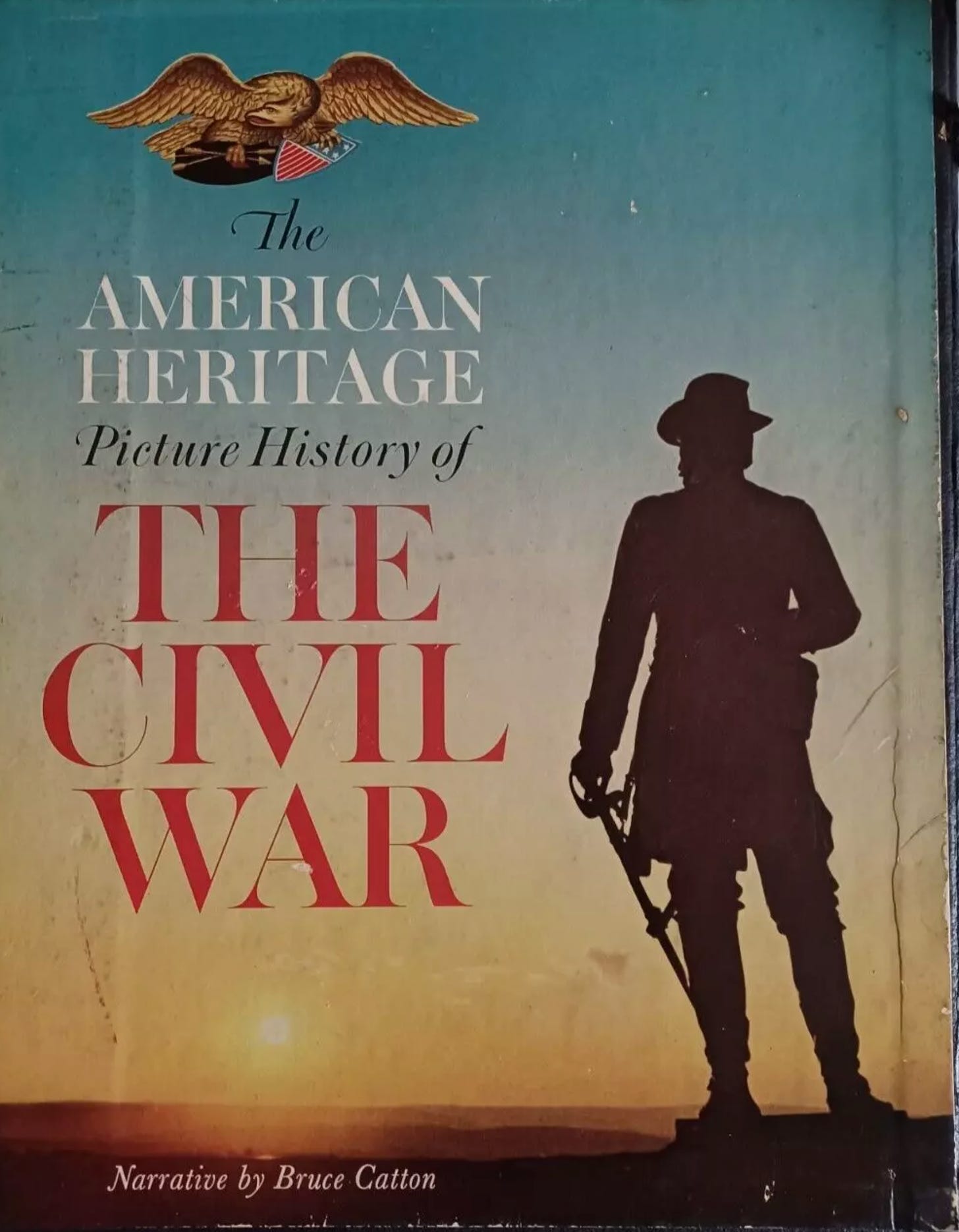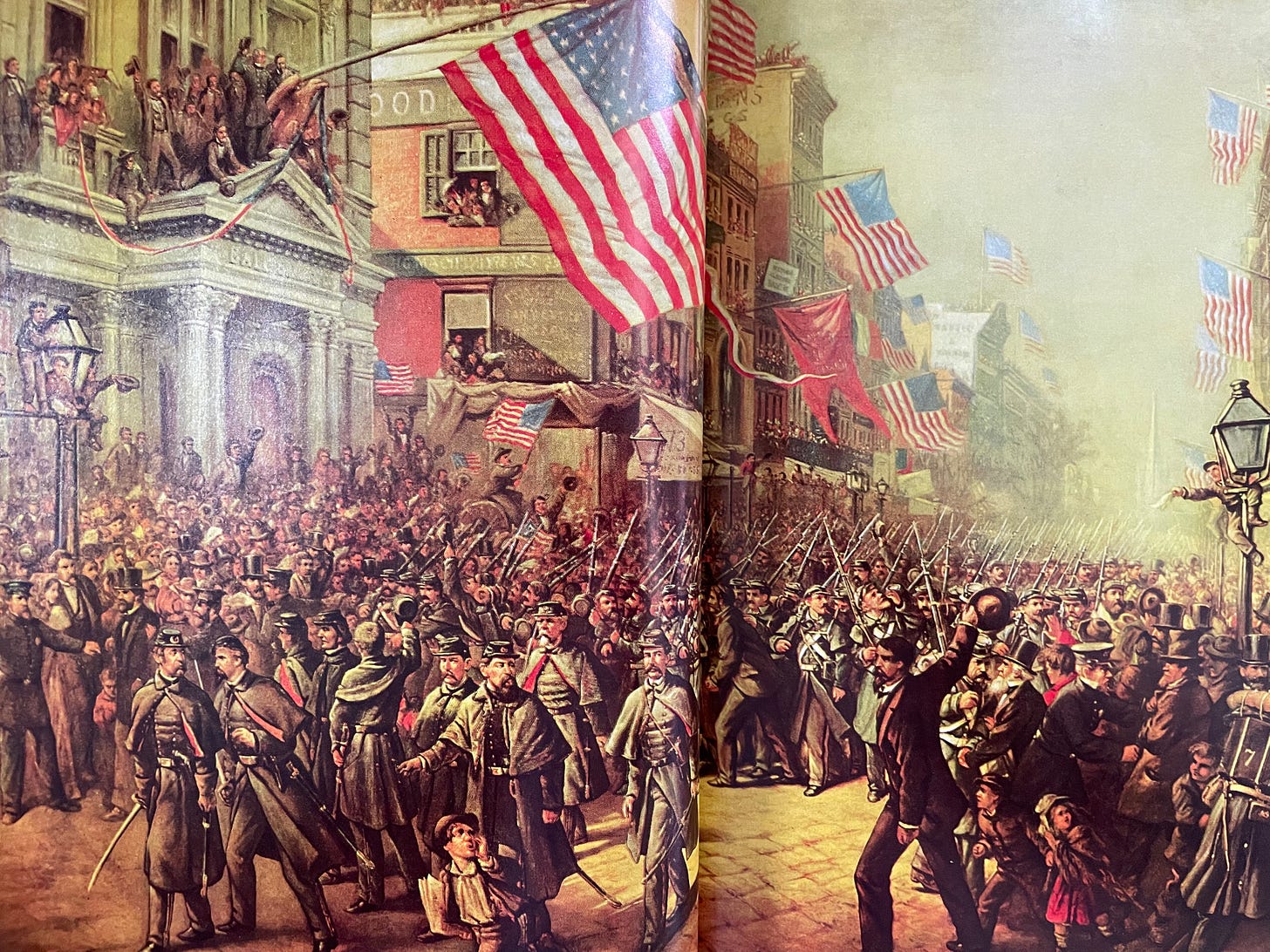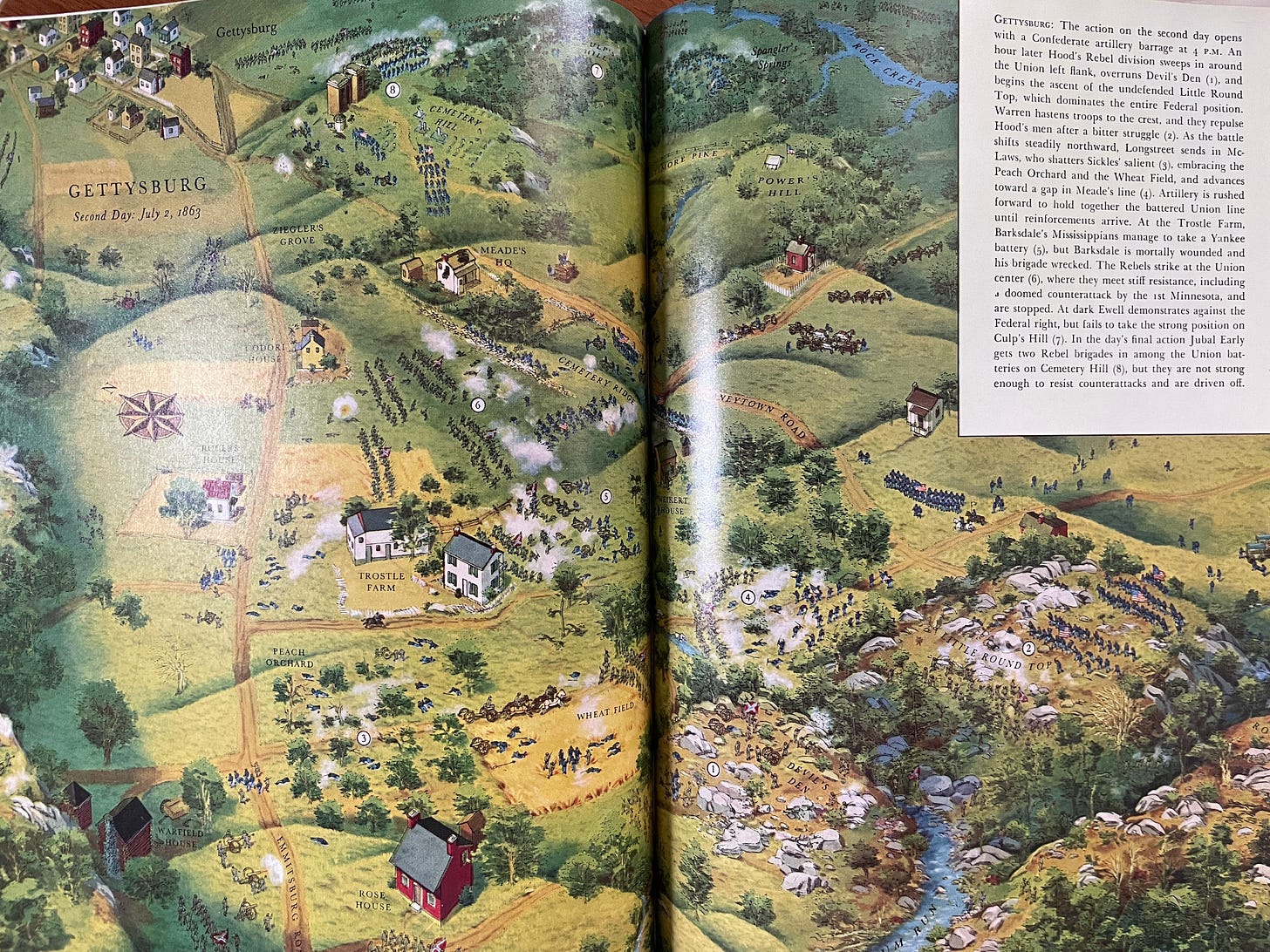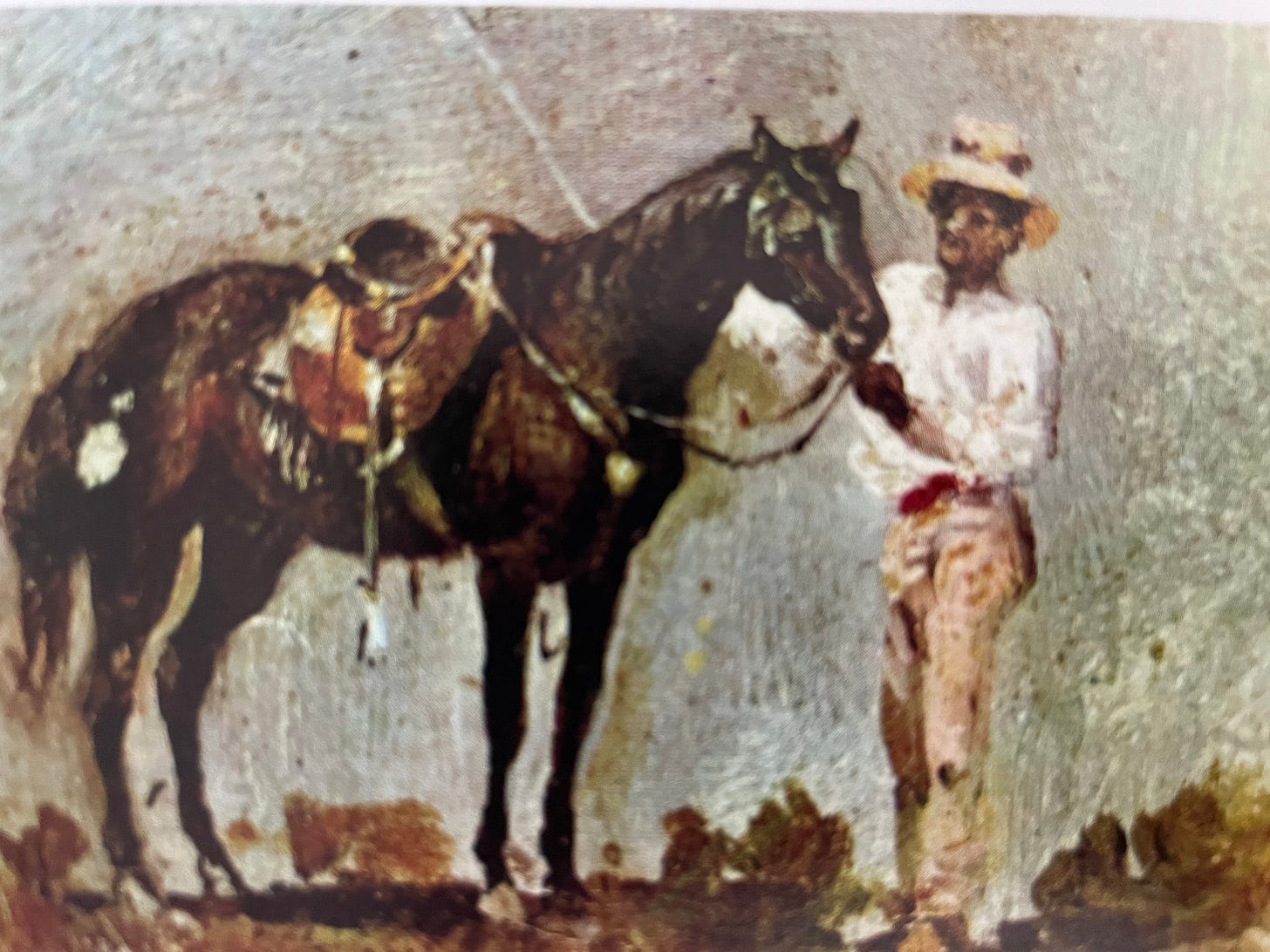Last night I picked up a copy of The American Heritage Picture History of the Civil War at the Rhode Island Civil War Round Table, where I spoke. I haven’t owned a copy in a number of years, but I couldn’t help but get excited (once again) as I leafed through the book.
I couldn’t help but reflect on the book’s significance. There have literally been tens of thousands of books published about the war, but in terms of measuring American Heritage’s contribution, this one stands out for a number of reasons
Timing of Publication: The book was published in 1960 at the very beginning of the Civil War centennial during a time of relative peace, between the end of the Korean War and America’s increased involvement in Vietnam. The Civil Rights Movement was beginning to pick up steam in 1960 with news of sit-ins and boycotts, but the famous marches, debates over legislation, and high-profile violence like “Bloody Sunday” in Selma, and the assassinations of Medgar Evers, Martin Luther King Jr., and others was still in the future.
The timing of the publication of this book, at the beginning of the centennial, created a new generation of students of the Civil War or “buffs.”
Illustrations: The book is a visual feast. It is beautifully illustrated with many full spread images, including a sketch by Thomas Nast of New York’s Seventh Regiment parading through the city on April 19, 1861, before heading to Washington, D.C. Nast would later expand his sketch into an oil painting. I think I see Robert Gould Shaw.
Then there are the battlefield maps done by David Greenspan. I can only imagine what it must have felt like for a kid to see these illustrations for the first time. Even for an adult you can’t help but lose yourself in it.
And I appreciated the inclusion of this painting by Conrad Chapman with the accompanying text: “Many Rebel officers were accompanied by Negro slaves.”
Narrative: OK, the narrative is dated in certain respects and would not hold up to close scrutiny given the decades of new scholarship, but you can’t go wrong with Bruce Catton. He is an incredible writer. The book does, however, cover emancipation and acknowledges the role of United States Colored Troops even if these subjects deserved more comprehensive interpretation. Ultimately, the book offers an engaging overview of the events leading up to the war and through to Lincoln’s assassination.
While the book reflects Lost Cause, reconciliationist, Unionist, and emancipationist themes, it is not defined by anyone category alone. Spend enough time with the book and you get a glimpse of how our collective memory of the Civil War was beginning to shift and how the struggles of the civil rights movement would push it along even further over the following decades.
There is much more that I could say about this book, but for now I am just going to enjoy it. So, is it the most important book ever published about the American Civil War?
What do you think?









Very grateful not only to learn about this, but to learn from the commenters how big a thing it has been for so long for so many. I had no idea--and like Norm, I was 12 in 1960, so I have memories of Civil War memory as it stood back then. I'm especially interested in the evolution of national memory of emancipation, and what I see as the puzzlingly scanted awareness of the contributions of hundreds of thousands of slavery escapees to emancipation's Civil War political evolution. I'm already looking for a copy. Thanks.
(PS: Just the other day I posted something about the Army's 1956 film "Historic Fort Monroe" for TV—27 minutes, available today online. They did a nice job, including an inadvertent, delayed-effect job of spotlighting the importance of constructive revisionism. The film reaches back to 1609 on Point Comfort, the Virginia sand spit where two centuries of fortifications preceded Fort Monroe. But it contains not even a hint that British North American slavery began there in 1619 or that--thanks in the very first place to the initiative of three enterprising slavery escapees stealing across Hampton Roads harbor--U.S. slavery began to crumble there in 1861. 1956 and 1960 were a long time ago.)
The artwork of the 7th NY Regiment parading and the battlefield KML includes strongly strike chords, but as I don't recall seeing the text on enslaved men serving army officers, perhaps I saw them in other sources.
(I was 12 years old in 1960. As KML says, then came the Civil Rights movement, the anti-war movement, the assassinations and murders, and for me, the one nearby. failed attempt: Arthur Bremer stalked George Wallace at my local shopping center just before shooting him up in the next county.)
I'm hardly close to an expert on your topic du jour, despite having tons of books and periodicals on the CW, antebellum, Reconstruction, 1619, and Harriet Tubman.
Personally, and probably because they are the latest I've studied, are Kent Masterson Brown's two books on Gettysburg's opposing generals, Ltc Harold Knudsen's and Cory Pfarr's books on Longstreet dissecting the lies of The Lost Cause, rooted in the same battle!
Then again, Gang ('Team' seems way too civil!) of Rivals by that Red Sox lady ought to count for something.
I'd recommend 'Our Man in Charleston' about the 10 years Robert Bunch, the hapless British consul there, spent if it were not so specialized. Now I realize, books on one battle are also overspecialized!
If I don't get my collection under control, the most important book I ever bought will be the last one I trip over. (Tubman was my wife's guiding star when she worked for Congresswoman Nancy Pelosi, sister Marylander to Tubman, rescuing refugees from around the world's trouble spots).